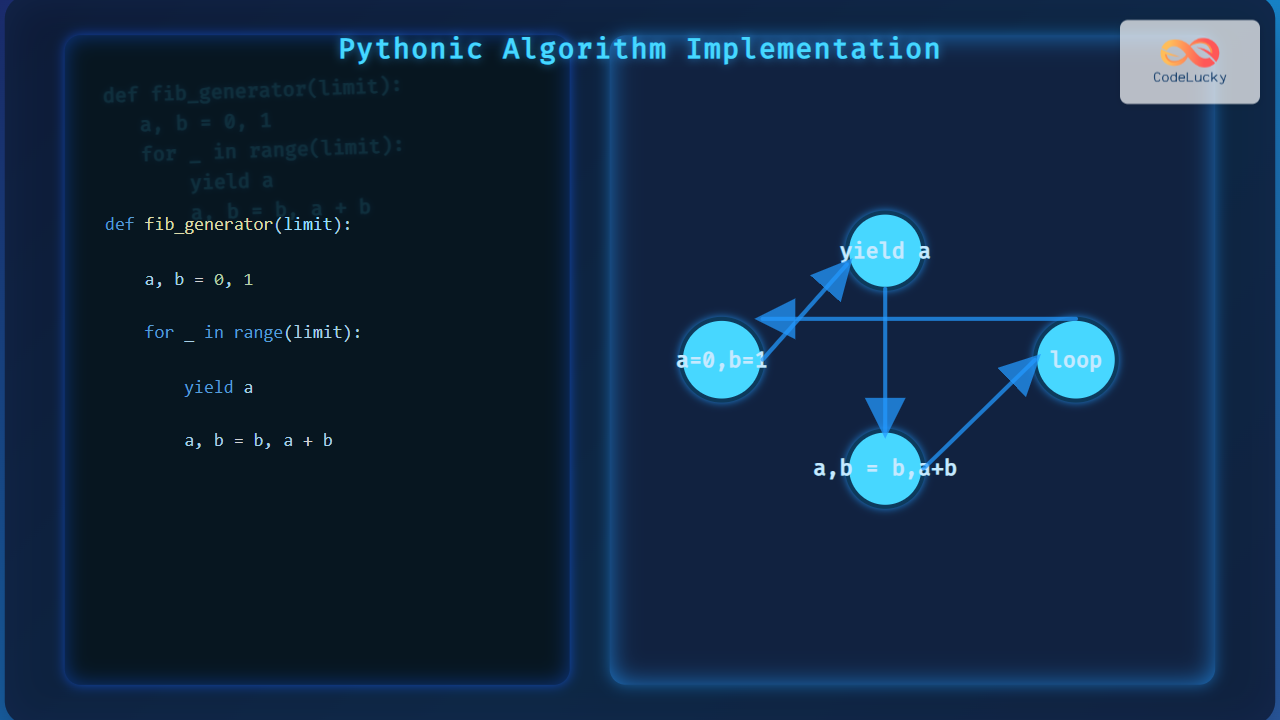Python is a versatile programming language that excels in many areas, including mathematical computations. Whether you're a data scientist, engineer, or hobbyist programmer, understanding Python's mathematical capabilities is crucial. In this comprehensive guide, we'll explore the essential mathematical functions and operations in Python, providing you with the tools you need to tackle complex calculations with ease.
The Math Module: Your Mathematical Swiss Army Knife
At the heart of Python's mathematical prowess lies the math module. This built-in module provides a wide array of mathematical functions and constants that are indispensable for scientific computing, engineering, and data analysis.
To get started, let's import the math module:
import math
Now, let's dive into some of the most commonly used functions and constants from this module.
Basic Mathematical Functions
1. Absolute Value
The abs() function returns the absolute value of a number. It's not part of the math module but is a built-in Python function.
print(abs(-5)) # Output: 5
print(abs(3.14)) # Output: 3.14
2. Rounding Numbers
Python offers several ways to round numbers:
round(): Rounds to the nearest integer (or to a specified number of decimal places)math.floor(): Rounds down to the nearest integermath.ceil(): Rounds up to the nearest integer
print(round(3.7)) # Output: 4
print(round(3.2)) # Output: 3
print(round(3.14159, 2)) # Output: 3.14
print(math.floor(3.7)) # Output: 3
print(math.ceil(3.2)) # Output: 4
💡 Fun fact: The round() function uses "banker's rounding" for tie-breaking. This means that 0.5 rounds to the nearest even integer.
3. Exponentiation and Logarithms
Python provides several functions for exponentiation and logarithms:
print(math.pow(2, 3)) # 2^3 = 8.0
print(math.exp(1)) # e^1 ≈ 2.718281828459045
print(math.log(10)) # Natural logarithm of 10
print(math.log10(100)) # Base-10 logarithm of 100
print(math.log2(8)) # Base-2 logarithm of 8
💡 Did you know? The natural logarithm (base e) is often used in calculus and differential equations due to its unique properties.
4. Trigonometric Functions
The math module includes all the standard trigonometric functions:
angle = math.pi / 4 # 45 degrees in radians
print(math.sin(angle)) # Sine
print(math.cos(angle)) # Cosine
print(math.tan(angle)) # Tangent
print(math.asin(0.5)) # Arcsine
print(math.acos(0.5)) # Arccosine
print(math.atan(1)) # Arctangent
🔍 Note: Trigonometric functions in Python work with radians, not degrees. Use math.radians() to convert degrees to radians if needed.
Mathematical Constants
The math module also provides several important mathematical constants:
print(math.pi) # π ≈ 3.141592653589793
print(math.e) # e ≈ 2.718281828459045
print(math.tau) # τ (2π) ≈ 6.283185307179586
Advanced Mathematical Operations
Now that we've covered the basics, let's explore some more advanced mathematical operations that Python can handle.
Complex Numbers
Python has built-in support for complex numbers. You can create a complex number using the j suffix for the imaginary part:
z = 3 + 4j
print(z.real) # Real part: 3.0
print(z.imag) # Imaginary part: 4.0
print(abs(z)) # Magnitude: 5.0
For more advanced operations with complex numbers, you can use the cmath module:
import cmath
z = 1 + 1j
print(cmath.phase(z)) # Phase angle in radians
print(cmath.polar(z)) # Polar coordinates (r, phi)
Statistical Functions
While not part of the math module, Python's statistics module provides functions for statistical calculations:
import statistics
data = [1, 2, 2, 3, 4, 4, 4, 5]
print(statistics.mean(data)) # Arithmetic mean
print(statistics.median(data)) # Median
print(statistics.mode(data)) # Mode
print(statistics.stdev(data)) # Standard deviation
💡 Pro tip: For more advanced statistical operations and data analysis, consider using libraries like NumPy and SciPy.
Numerical Integration
Python can perform numerical integration using the scipy library. Here's an example of integrating a simple function:
from scipy import integrate
def f(x):
return x**2
result, error = integrate.quad(f, 0, 1)
print(f"The integral of x^2 from 0 to 1 is approximately {result}")
Matrix Operations
For matrix operations, NumPy is the go-to library. Here's a quick example:
import numpy as np
A = np.array([[1, 2], [3, 4]])
B = np.array([[5, 6], [7, 8]])
print(np.dot(A, B)) # Matrix multiplication
print(np.linalg.inv(A)) # Matrix inverse
print(np.linalg.eigvals(A)) # Eigenvalues
Practical Examples
Let's put our mathematical knowledge to use with some practical examples.
Example 1: Calculating Compound Interest
Here's a function to calculate compound interest:
def compound_interest(principal, rate, time, n):
"""
Calculate compound interest.
Args:
principal (float): Initial investment
rate (float): Annual interest rate (as a decimal)
time (int): Number of years
n (int): Number of times interest is compounded per year
Returns:
float: Final amount after compound interest
"""
return principal * (1 + rate/n)**(n*time)
# Example usage
initial_investment = 1000
annual_rate = 0.05 # 5%
years = 10
compounds_per_year = 12 # Monthly compounding
final_amount = compound_interest(initial_investment, annual_rate, years, compounds_per_year)
print(f"After {years} years, your investment will grow to ${final_amount:.2f}")
Example 2: Solving a Quadratic Equation
Let's create a function to solve quadratic equations of the form ax^2 + bx + c = 0:
import cmath
def solve_quadratic(a, b, c):
"""
Solve a quadratic equation of the form ax^2 + bx + c = 0.
Args:
a, b, c (float): Coefficients of the quadratic equation
Returns:
tuple: Two roots of the equation
"""
discriminant = b**2 - 4*a*c
root1 = (-b + cmath.sqrt(discriminant)) / (2*a)
root2 = (-b - cmath.sqrt(discriminant)) / (2*a)
return root1, root2
# Example usage
a, b, c = 1, 5, 6
roots = solve_quadratic(a, b, c)
print(f"The roots of the equation {a}x^2 + {b}x + {c} = 0 are:")
print(f"x1 = {roots[0]}")
print(f"x2 = {roots[1]}")
Example 3: Calculating the Area of a Regular Polygon
Here's a function to calculate the area of a regular polygon:
import math
def polygon_area(n, side_length):
"""
Calculate the area of a regular polygon.
Args:
n (int): Number of sides
side_length (float): Length of each side
Returns:
float: Area of the polygon
"""
apothem = side_length / (2 * math.tan(math.pi / n))
perimeter = n * side_length
area = 0.5 * apothem * perimeter
return area
# Example usage
sides = 6 # Hexagon
length = 5
area = polygon_area(sides, length)
print(f"The area of a regular {sides}-sided polygon with side length {length} is {area:.2f}")
Conclusion
Python's mathematical capabilities are vast and powerful. From basic arithmetic to complex numerical analysis, Python provides the tools you need to tackle a wide range of mathematical problems. The built-in math module, along with additional libraries like NumPy, SciPy, and SymPy, make Python an excellent choice for scientific computing, data analysis, and mathematical modeling.
As you continue to explore Python's mathematical functions and operations, remember that practice is key. Try implementing these concepts in your own projects, and don't hesitate to dive deeper into the documentation of the various mathematical libraries available in Python.
Whether you're calculating compound interest, solving equations, or performing advanced statistical analysis, Python has got you covered. Happy coding and calculating!













